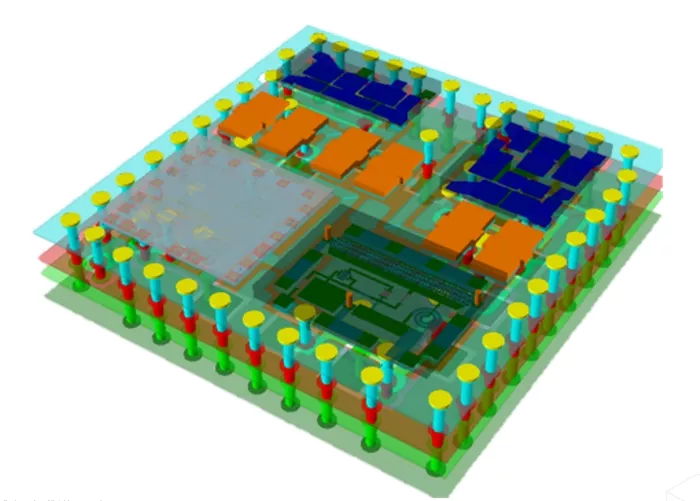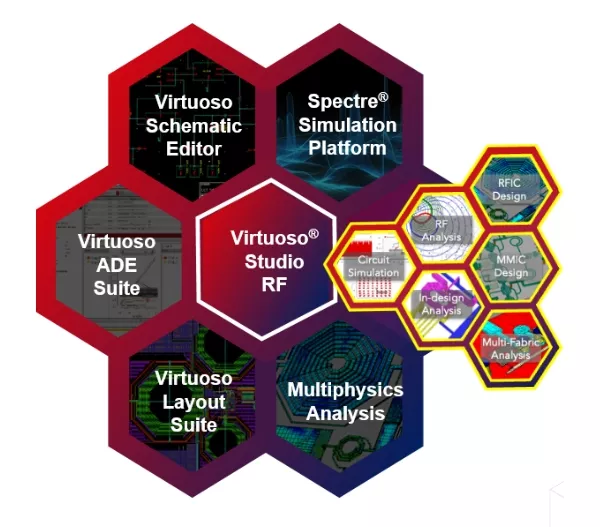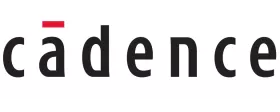Introducing Cadence's Virtuoso Studio RF: Advancing RF Design for 3D-IC
Next-generation RF to millimeter-wave silicon MMIC and module product development software
Cadence is excited to announce the launch of its latest RF design and analysis platform, Virtuoso Studio RF. This powerful and highly interactive platform leverages industry-proven design automation and simulation technology to offer unparalleled design efficiency and enhanced productivity to greatly reduce design turnaround times.

The Evolving Complexity of RF Design
RF design has always been a critical component in the development of modern communication systems, including wireless networks, satellite communications, and radar systems. As technology advances, the demand for more sophisticated and efficient RF design tools has grown exponentially. Legacy workflows based on multi-vendor solutions and third-party analysis platforms often struggle to keep up with the complexity and precision required in today's RF engineering projects.
One of the significant trends in the evolution of RF design is the shift towards heterogeneous integration for multi-fabric RF modules. These systems combine different types of technologies and materials, such as silicon, gallium arsenide (GaAs), and indium phosphide (InP), within a single module to optimize performance and functionality. Heterogeneous integration allows designers to leverage the best properties of each material, enabling the development of highly efficient and compact RF systems. This trend is particularly relevant for applications in 5G/6G communications, IoT devices, and advanced radar systems.
The integration of multiple technologies within a single module also facilitates the development of more versatile and adaptive RF solutions. By incorporating various components, such as amplifiers, filters, and antennas, into a unified module, designers can achieve better performance, reduced power consumption, and enhanced reliability. Additionally, heterogeneous integration supports the miniaturization of RF modules, making them more suitable for compact and portable devices.
Recognizing these challenges, Cadence has developed Virtuoso Studio RF to provide an advanced solution that addresses the needs of RF designers working with silicon ICs and multi-chip modules. This new platform is designed to enhance productivity by streamlining data sharing between this specialized RF/mW design and analysis platform and the broader Virtuoso Heterogeneous Integration solution for 3D-IC systems.
Key Features of Virtuoso Studio RF
Virtuoso Studio RF is packed with a range of features that make it an indispensable tool for RF designers. Some of the standout capabilities include:
Virtuoso Design Link
One of the most innovative features of Virtuoso Studio RF is the Virtuoso design link. This next-generation dynamic interface connects RFIC designs (intellectual property) created in Virtuoso for use in system analysis test benches and RFIC/laminate co-design. Virtuoso design link enhances collaboration among engineers, allowing design teams to seamlessly embed RFIC designs into larger system-level projects.
Virtuoso design link lets you open existing Virtuoso IP in the Virtuoso Studio RF platform for extended RF design and analysis tasks. This includes device sizing and characterization, such as DC IV curves, S-parameter plotting, and load-pull contours. It pulls symbols from the Virtuoso session with the underlying Spectre netlist and design parameters for use in Virtuoso Studio RF.
Virtuoso Studio RF design link supports advanced RF analyses such as load-pull, standards-compliant waveform testbenches for linearity simulations and nonlinear stability analysis, as well as optimization with the Cadence Spectre RF Option circuit simulator using the same design data as the original Virtuoso device under test (DUT).
Virtuoso PDK Re-Use
Virtuoso Studio RF can consume Virtuoso Process Design Kits (PDKs) to ensure accuracy and efficiency in RF design. These kits, developed and validated by foundries, incorporate the same pCells, callbacks, and simulation models used in the Virtuoso Studio platform. Using these components in Virtuoso Studio RF guarantees consistent and precise results across platforms. This approach ensures accurate RF designs, accelerates the design cycle, and improves productivity.
Comprehensive Design Environment
The Virtuoso Studio RF platform provides a complete design environment that integrates schematic capture, layout, system, and EM verification tools. This seamless integration, paired with support for original Virtuoso PDKs, allows designers to work more efficiently, reducing the time and effort required to develop complex silicon MMIC and RF module designs. The unified design capture system facilitates a layout-forward physical design flow ideal for RF to millimeter-wave systems. Electrical and layout design entries are dynamically linked, ensuring that components placed in an electrical schematic automatically generate a synchronized physical layout.
Advanced Simulation and Analysis
Virtuoso Studio RF offers state-of-the-art simulation and analysis tools that enable designers to accurately model and predict the behavior of RF circuits and systems. Using the powerful Spectre simulation engine, users can perform detailed analyses of RF front-end blocks, ensuring optimal performance and reliability.
One of the standout features includes co-simulation with the Cadence Spectre RF circuit simulator. Spectre RF provides a comprehensive set of tools for analyzing the performance of RF designs, including harmonic balance, periodic steady-state analysis, and noise analysis. By using the Spectre RF simulator, RF designers are ensured accurate and consistent results across platforms, thereby reducing guesswork and uncertainty. It enables designers to simulate complex RF circuits with high accuracy and confidence, ensuring that their designs meet stringent performance requirements.
In-Design Multiphysics Analysis
Virtuoso Studio RF has the capability for in-design multiphysics analysis. This ensures a holistic approach to RF design by including the parasitic behavior associated with physical design that can impact the performance of RF circuits. The platform integrates seamlessly with Cadence EMX Planar 3D Solver for planar electromagnetic (EM) analysis, the planar EM simulator of choice for silicon-based designs among many leading silicon foundries.
Using the EMX solver, you can perform detailed planar EM analysis of silicon to understand how electromagnetic fields interact with the design. This analysis helps identify and mitigate potential issues such as crosstalk, signal integrity problems, and electromagnetic interference (EMI). By incorporating the solver within the Virtuoso Studio RF environment, you have a powerful toolset that ensures accurate simulation results and thereby the performance of the RF designs.

High-Level Design Automation
The platform leverages advanced design automation techniques to simplify and accelerate the RF design process. Automated design rule checking, layout generation, and optimization tools help designers achieve faster turnaround times and higher-quality results.
Why Choose Virtuoso Studio RF?
Cadence's Virtuoso Studio RF is poised to become the go-to solution for RF designers worldwide. Here are some compelling reasons to choose this innovative platform:
Unmatched Performance
Virtuoso Studio RF delivers exceptional performance and accuracy, enabling designers to tackle even the most challenging RF design projects with confidence. Its advanced simulation and analysis tools ensure that designs meet stringent performance requirements and standards.
Seamless Integration
The platform's comprehensive design environment ensures seamless integration between different design stages, from schematic capture to layout and verification. This integration reduces the risk of errors and inconsistencies, resulting in higher-quality designs.
Increased Productivity
With its collaborative features and design automation tools, Virtuoso Studio RF significantly boosts productivity, allowing design teams to work more efficiently and effectively. This increased productivity translates to faster time-to-market and reduced development costs.
Future-Proof Technology
Virtuoso Studio RF is built on a robust and scalable architecture that can adapt to the evolving needs of RF design. As technology continues to advance, the platform will remain at the forefront of innovation, providing designers with the tools they need to stay ahead of the curve.
Conclusion
The launch of Cadence's Virtuoso Studio RF marks a significant milestone in delivering a single vendor RF solution from Cadence. With its advanced features, seamless integration, and focus on design efficiency and engineering productivity, this platform is set to greatly accelerate Si MMIC and RF module development. Whether you're developing cutting-edge communication systems or sophisticated radar technology, Virtuoso Studio RF provides the capabilities you need to succeed.
Stay tuned for more updates and information on Virtuoso Studio RF, as we share news about foundry PDK availability and customer success details. Contact your Cadence account team to learn more about the future of RF design with Cadence and discover how Virtuoso Studio RF can help you achieve your design goals.
Related Chiplet
- Interconnect Chiplet
- 12nm EURYTION RFK1 - UCIe SP based Ka-Ku Band Chiplet Transceiver
- Bridglets
- Automotive AI Accelerator
- Direct Chiplet Interface
Related Blogs
- How Cadence Is Expanding Innovation for 3D-IC Design
- Cadence Recognized for Accelerating AI and 3D-IC Applications by Samsung Foundry
- 3D-IC Design Tools: Cadence Workflows for Planning, Assembly, and Analysis
- Synopsys and Alchip Accelerate IO & Memory Chiplet Design for Multi-Die Systems
Latest Blogs
- Advancing Europe’s Automotive Chiplet Vision: Arteris Joins CHASSIS to Accelerate Software-Defined Mobility
- 3D-IC Market Outlook: Technology Roadmaps, Readiness, and Design Implications
- Cadence 3D-IC Success Stories: Faster Bandwidth, Lower Power, On-Time Tapeouts
- 3D-IC Test and Reliability: KGD Strategies, Access Architecture, & Failure Mode
- 3D-IC in AI, HPC, and 5G: Bandwidth, Latency, and Energy per Bit Advantages
